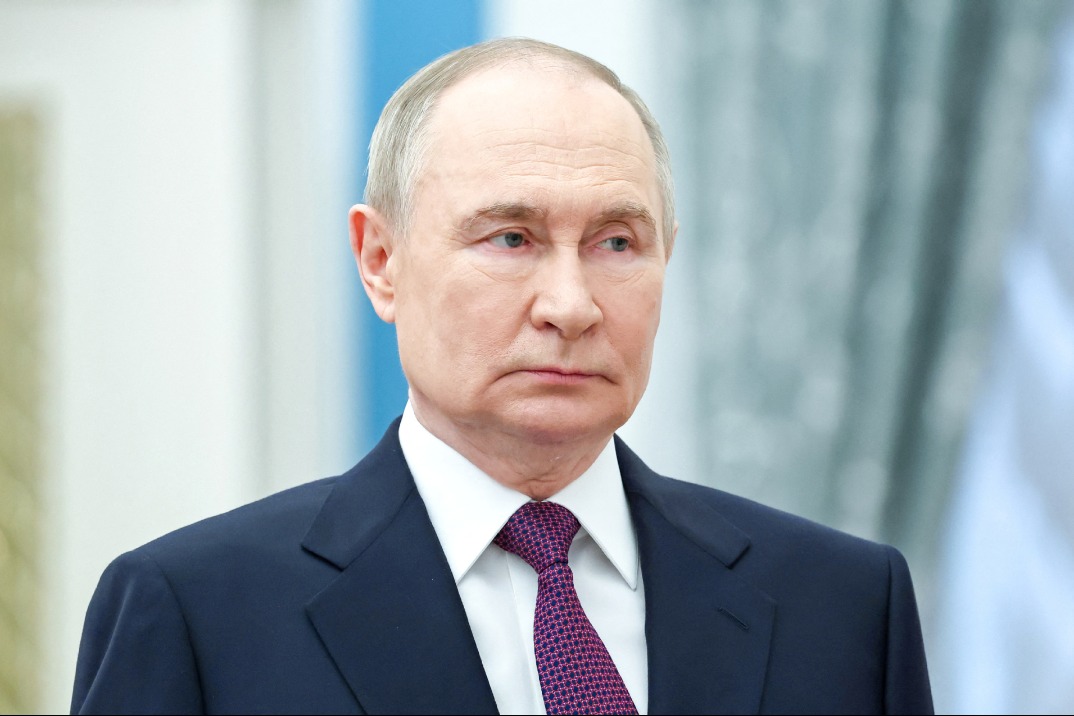IN BRIEF (Page 2)

| Dilara (left) and Gulziba, from the Xinjiang Uygur autonomous region, visit Purple Bamboo Park in Beijing on Jan 3. More than 600,000 people visited parks in Beijing during the New Year holiday of Jan 1-3. Zou Hong / China Daily |
Environment
New monitoring standards
China on Jan 1 started to issue daily reports on air quality in 74 major Chinese cities by adopting more extensive monitoring standards, including the level of PM 2.5 - the smallest and most dangerous pollution particles. Five other pollutants, including ozone and carbon monoxide, were also placed under the new monitoring standard issued in February by the Ministry of Environmental Protection.
The previous standard only covered PM 10 - particulate matter up to 10 micrometers in size, sulfur dioxide and nitrogen dioxide.
The data, released on the website of the China National Environmental Monitoring Center, is updated on an hourly basis. People can also check the information for these pollutants monitored in the previous 24 hours at various monitoring stations in the 74 cities.
PM 2.5 are considered more dangerous than larger particles, as they can penetrate deeper into the lungs.
Transport
Traffic rules tightened
Drivers in China will have to pay more attention to traffic rules or risk paying much higher penalties, according to a revised regulation that took effect on Jan 1.
The regulation on the application and use of driving licenses, issued by the Ministry of Public Security in October, aims to bring drivers under greater oversight and prevent traffic violations, the ministry said.
The revised regulation imposes heavier penalties on drivers who violate traffic rules. Under the new rules, 52 different types of violations are now punishable, compared with 38 under the previous regulations.
The new rules also make the penalties for certain common traffic violations stricter. Running a red light can result in the deduction of six points from an offender's driving license, up from three points earlier. Some other common violations, such as speeding, making phone calls while driving, and drinking and driving, will also result in heavier penalties.
The deduction of 12 points from a driving license over the course of a year will lead to the suspension of the license. To get it back, a driver will have to undergo training and pass a fresh driving test.
Science
Beidou helps put region on map
The Beidou navigation system began providing services for civilians in the Asia-Pacific region on Dec 27.
After going through a one-year trial operation and adding six more satellites in 2012, Beidou, in terms of performance, is "comparable" to the United States' GPS, Ran Chengqi, spokesman for the China Satellite Navigation Office, said. Beidou, which means compass, now has a constellation of 16 navigation satellites and four experimental satellites.
Its positioning accuracy has also improved, from 25 meters horizontally and 30 meters vertically at the beginning of the trial operation to the current 10 meters both horizontally and vertically, he said.
But in a GPS-dominated market, Beidou needs enterprises to participate in the development of applications for the system. A number of foreign companies have already shown an interest.
Health
White paper offers cure for system
Despite the long-term challenges China faces in providing people with high-quality medical care, particularly in rural areas, the top health authority has vowed to ease patients' economic burden.
By 2015, individual out-of-pocket medical spending will be reduced to below 30 percent from the current 34.8 percent, said Vice-Minister of Health Zhang Mao at the launch of the country's first white paper on medical and health services.
The Information Office of the State Council released the document on Dec 26. Citizens in many developed countries pay about 20 percent of their medical bills out of pocket. International studies show that the rate should be kept below 30 percent to prevent patients from going broke in case of major diseases, according to Zhang.
The figure in China has declined to its current level from nearly 60 percent in 2001, said the white paper.
Investment
Hanlong inches closer to Sundance
Hanlong Group is likely to complete its acquisition of Australia's Sundance Resources in February, a step that will give the privately-owned Chinese company control over a major iron ore mine in west Africa.
The acquisition will start on Feb 26 and end on March 1, after documents are submitted to the Australian Securities and Investments Commission, Hanlong officials said on Dec 28.
Sundance controls the Mbalam Iron Ore Mine in Cameroon and the Republic of Congo. Hanlong executives had earlier disclosed that the company was in talks with leading state firms to jointly develop the mine.
Hanlong is investing $5 billion to develop its first mining project in Mbalam, as well as build a 550-km railway and a shipping port. It is slated to start operating in 2014, the company officials said.
The Mbalam mine - composed of the Mbarga fields in Cameroon and the Nabeba fields in the Republic of Congo - holds 865 million to 925 million tons of iron ore, according to an initial estimate.
Observers say Hanlong's control of the Mbalam mine will give China greater influence in international iron ore pricing talks.
(China Daily 01/04/2013 page2)
Today's Top News
- EU has much to learn from China-Global South ties
- Key role of Sino-German ties stressed
- Xi stresses high-quality cultural-ethical advancement
- Trump halts Harvard's intl student enrollment
- Xi's visit gives impetus to our work
- Financing support enhanced for micro, small companies































